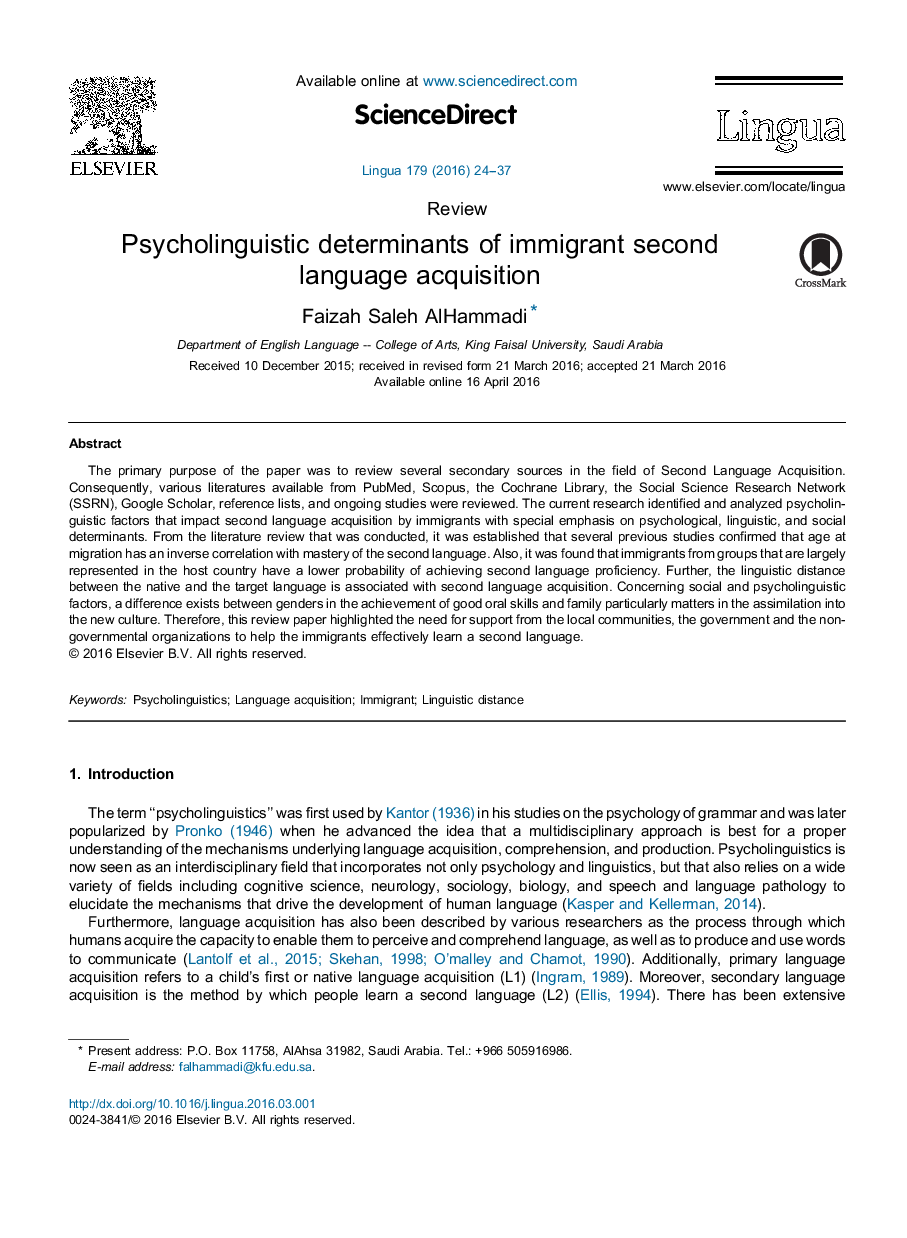| Article ID | Journal | Published Year | Pages | File Type |
|---|---|---|---|---|
| 935220 | Lingua | 2016 | 14 Pages |
•Psycholinguistic factors that influence second language acquisition by immigrants.•Age at migration has an inverse correlation with mastery of the second language.•Linguistic distance is associated with second language acquisition.•Immigrants need support to learn second language.
The primary purpose of the paper was to review several secondary sources in the field of Second Language Acquisition. Consequently, various literatures available from PubMed, Scopus, the Cochrane Library, the Social Science Research Network (SSRN), Google Scholar, reference lists, and ongoing studies were reviewed. The current research identified and analyzed psycholinguistic factors that impact second language acquisition by immigrants with special emphasis on psychological, linguistic, and social determinants. From the literature review that was conducted, it was established that several previous studies confirmed that age at migration has an inverse correlation with mastery of the second language. Also, it was found that immigrants from groups that are largely represented in the host country have a lower probability of achieving second language proficiency. Further, the linguistic distance between the native and the target language is associated with second language acquisition. Concerning social and psycholinguistic factors, a difference exists between genders in the achievement of good oral skills and family particularly matters in the assimilation into the new culture. Therefore, this review paper highlighted the need for support from the local communities, the government and the non-governmental organizations to help the immigrants effectively learn a second language.
